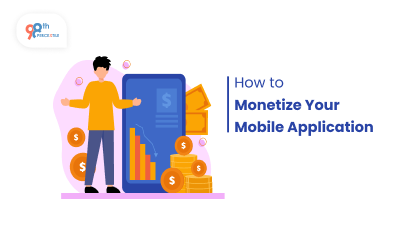Creating a mobile application demands time, resources, effort, and creativity. Once your app is ready, the real challenge is generating revenue from it—a process called monetization. With proper planning, you can use one or multiple revenue streams relevant to your app’s purpose and target audience. This blog outlines the top methods to make money from your mobile applications while keeping users satisfied.
In-App Advertising
In-app advertising is among the most popular monetization models. By incorporating ads, developers earn through impressions, clicks, or user actions on the ads. Common types include banners, interstitials, videos, and native ads. Platforms like Google AdMob for Android and Facebook Audience Network for iOS enable developers to place ads strategically, maximizing revenue without overwhelming users with excessive ads.
Learn to Code for FREE – Enroll Today!
Freemium Model
The freemium model provides a free app version with limited features, encouraging users to upgrade for added functionality. Effective for apps offering valuable services, this model is popular with apps like Spotify and Dropbox, where users pay for benefits like ad-free experiences or extra storage.
Subscription Model
A subscription model charges users a recurring fee (monthly or yearly) for premium features or content. This approach is suitable for content-heavy apps, such as news, music, video streaming, or fitness. Netflix, Headspace, and NYTimes apps use this model, offering steady revenue through premium content.
In-App Purchases
In-app purchases allow users to buy virtual items or features within the app, common in gaming apps where users purchase coins, lives, or characters. Non-gaming apps, like photo editors, can also offer premium features or filters through in-app purchases, appealing to users wanting more functionality.
Sponsorship and Partnerships
Brands may pay to place advertisements within your app or for co-branded content and offers. For example, a fitness app could partner with a health supplement brand to offer users free trials or sponsor app challenges. These collaborations can generate revenue and increase app value.
Affiliate Marketing
With affiliate marketing, the app owner promotes third-party products or services, earning a commission for each sale or action. This is effective in shopping, travel, and lifestyle apps. Amazon Affiliate Program and Rakuten Marketing are popular platforms for embedding affiliate links in apps.
Paid Apps
In the paid app model, users pay a one-time download fee. This approach suits apps offering unique value, solving specific problems, or catering to niche audiences. For a paid app to succeed, strong marketing and a clear value proposition are essential to justify the upfront cost.
Crowdfunding
Crowdfunding allows developers to raise funds from users interested in the app concept. Platforms like Kickstarter and Indiegogo enable developers to validate app ideas, generate interest, and raise necessary funds. Offering backers early access or perks fosters exclusivity while helping finance further development.
To monetize a mobile app effectively, choose a model tailored to your app’s purpose and audience. Each strategy offers unique advantages, from ad-based revenue to subscription stability. Whether you select one approach or combine multiple, prioritizing user value is key to a successful monetization strategy that enhances user satisfaction and engagement.
FAQs (Frequently Asked Questions)
Q.1: Which monetization model is best for gaming apps?
Ans: In-app purchases are ideal, allowing users to buy virtual items and upgrades for a more immersive experience.
Q.2: Can I combine multiple monetization models?
Ans: Yes, many apps successfully use a combination, like in-app ads with a freemium or subscription model, to boost revenue.
Q.3: Are paid apps profitable?
Ans: Yes, if the app’s value proposition and marketing efforts justify the one-time download fee.
Q.4: Is the subscription model suitable for all app types?
Ans: This model works best for content-rich apps, like streaming services, but may not suit utility apps.
Q.5: How can I avoid user churn with a freemium model?
Ans: Offer a robust free version that encourages upgrades without reducing free user satisfaction.
Build Coding Skills for FREE – Claim Your Spot!

 Students/Staff
Students/Staff Parents
Parents ElevatEd
ElevatEd














